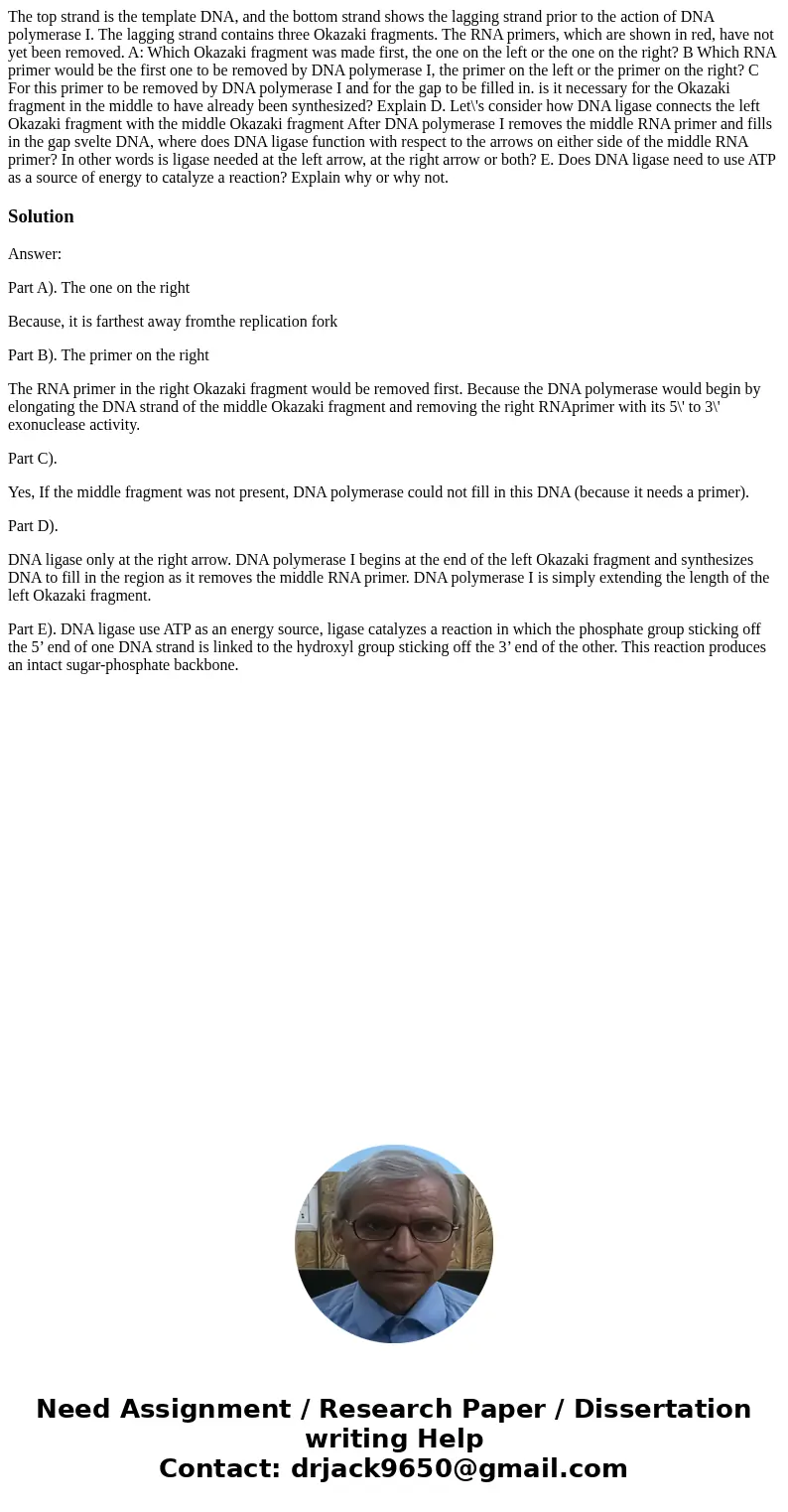The top strand is the template DNA and the bottom strand sho
Solution
Answer:
Part A). The one on the right
Because, it is farthest away fromthe replication fork
Part B). The primer on the right
The RNA primer in the right Okazaki fragment would be removed first. Because the DNA polymerase would begin by elongating the DNA strand of the middle Okazaki fragment and removing the right RNAprimer with its 5\' to 3\' exonuclease activity.
Part C).
Yes, If the middle fragment was not present, DNA polymerase could not fill in this DNA (because it needs a primer).
Part D).
DNA ligase only at the right arrow. DNA polymerase I begins at the end of the left Okazaki fragment and synthesizes DNA to fill in the region as it removes the middle RNA primer. DNA polymerase I is simply extending the length of the left Okazaki fragment.
Part E). DNA ligase use ATP as an energy source, ligase catalyzes a reaction in which the phosphate group sticking off the 5’ end of one DNA strand is linked to the hydroxyl group sticking off the 3’ end of the other. This reaction produces an intact sugar-phosphate backbone.

 Homework Sourse
Homework Sourse